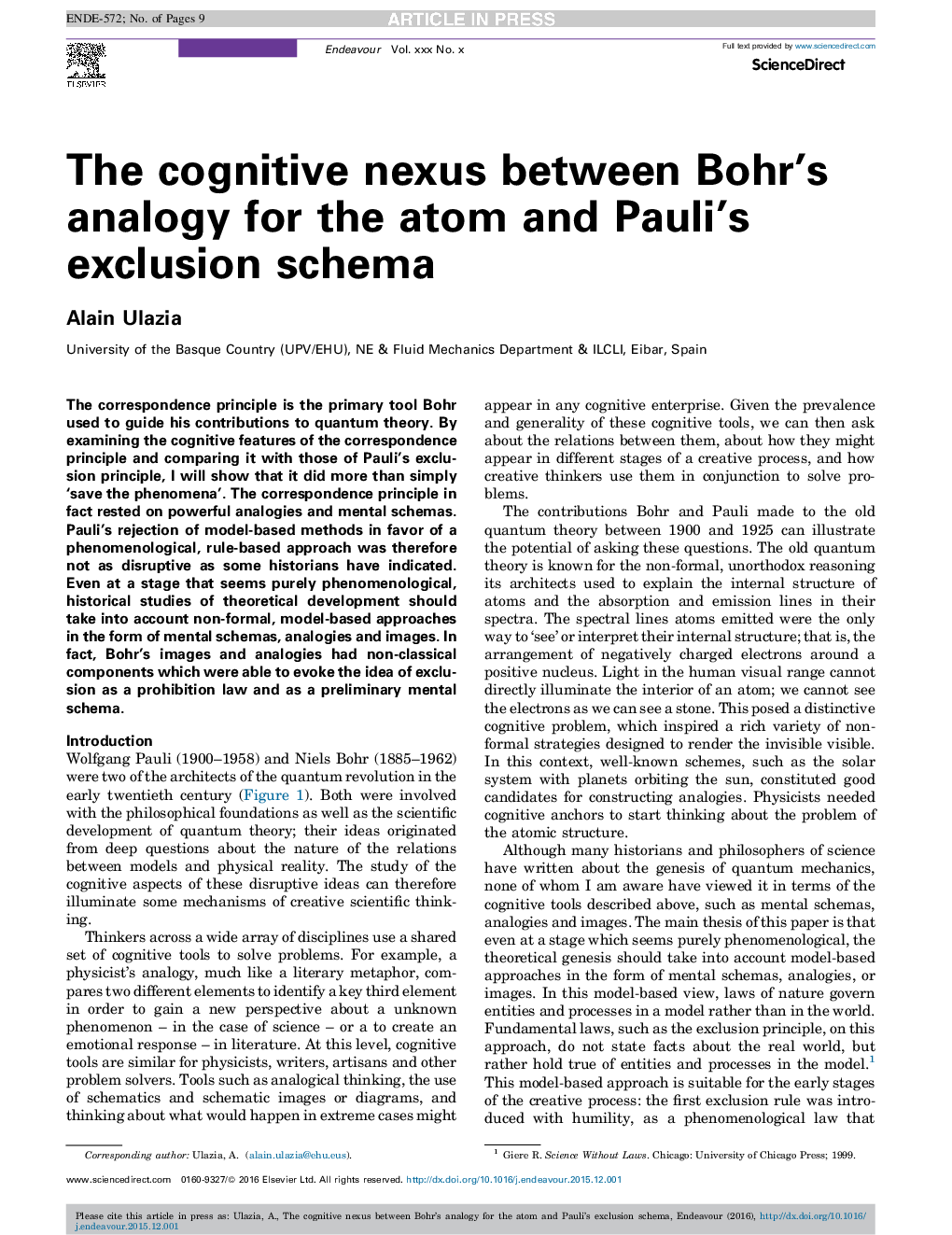| Article ID | Journal | Published Year | Pages | File Type |
|---|---|---|---|---|
| 10527888 | Endeavour | 2016 | 9 Pages |
Abstract
The correspondence principle is the primary tool Bohr used to guide his contributions to quantum theory. By examining the cognitive features of the correspondence principle and comparing it with those of Pauli's exclusion principle, I will show that it did more than simply 'save the phenomena'. The correspondence principle in fact rested on powerful analogies and mental schemas. Pauli's rejection of model-based methods in favor of a phenomenological, rule-based approach was therefore not as disruptive as some historians have indicated. Even at a stage that seems purely phenomenological, historical studies of theoretical development should take into account non-formal, model-based approaches in the form of mental schemas, analogies and images. In fact, Bohr's images and analogies had non-classical components which were able to evoke the idea of exclusion as a prohibition law and as a preliminary mental schema.
Related Topics
Social Sciences and Humanities
Arts and Humanities
History
Authors
Alain Ulazia,
